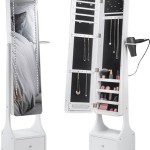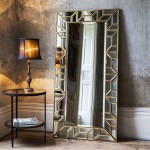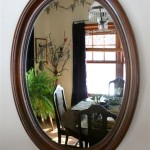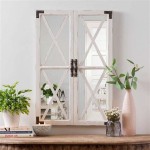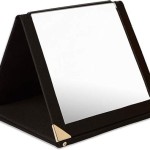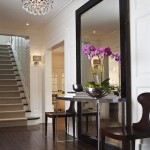Are Antique Mirrors Valuable?
Antique mirrors can be captivating additions to any interior, adding a touch of history and elegance. Beyond their aesthetic appeal, many wonder if these pieces hold significant monetary value. This article explores the factors that influence the value of antique mirrors, providing insights into identifying potentially valuable pieces.
Key Factors Influencing Value
Several factors contribute to the value of an antique mirror. Understanding these elements is crucial for both buyers and sellers seeking to assess worth accurately.
Age and Historical Period
The age of a mirror is a significant determinant of its value. Mirrors from earlier periods, such as the 17th and 18th centuries, are generally more valuable due to their rarity and historical significance. However, age alone doesn't guarantee high value. The condition and other attributes also play a role.
Size and Shape
The size and shape of a mirror can impact its desirability and value. Large, elaborate mirrors tend to command higher prices than smaller, simpler ones. Unusual or unique shapes, such as ovals, or those with intricate architectural framing, can also increase value.
Frame Material and Design
The frame of an antique mirror significantly influences its value. Frames made of high-quality materials such as carved wood, gilded gesso, or ornate metalwork are often more desirable. The craftsmanship and intricacy of the frame design also play a key role in determining worth. Frames exhibiting intricate carvings, detailed moldings, or unique decorative elements can significantly enhance a mirror's value.
Glass Quality and Condition
The quality and condition of the mirror's glass surface are critical factors in determining value. Antique mirrors often exhibit some degree of aging, such as foxing, silvering loss, or minor imperfections in the glass. While some aging can be considered part of the mirror's character, significant damage, clouding, or distortion can detract from its value. Mirrors with clear, well-preserved reflective surfaces are typically more valuable.
Maker or Style Attribution
Knowing the maker or stylistic origins of an antique mirror can significantly impact its value. Pieces attributed to renowned furniture makers, designers, or specific stylistic movements, such as Art Deco or Victorian, can command higher prices. Provenance, or documented history of ownership, can further enhance value.
Rarity and Demand
The rarity of a particular mirror type or style influences its market value. Mirrors produced in limited quantities or featuring unique design elements are often more sought after by collectors. Current market trends and collector demand also play a significant role in determining price fluctuations.
Signs of Authenticity
Identifying authentic antique mirrors requires careful examination for telltale signs of age and craftsmanship. Hand-blown glass often exhibits slight imperfections and variations in thickness. Antique mirrors typically use thicker glass than modern mirrors. Examining the back of the mirror can reveal clues about age and construction techniques. Authentic antique silvering often shows signs of aging, such as foxing or tarnishing.
Where to Find and Appraise Antique Mirrors
Antique shops, auctions, estate sales, and online marketplaces are common sources for finding antique mirrors. Reputable antique dealers specialize in these items and can provide valuable information about age, style, and authenticity. Professional appraisers can provide accurate valuations based on market research and expert analysis. Appraisals are crucial for insurance purposes and for determining fair market value when buying or selling.
Caring for Antique Mirrors
Proper care is essential for preserving the value and beauty of antique mirrors. Avoid harsh cleaning chemicals and abrasive materials that can damage the delicate glass and frame. Dusting with a soft cloth is generally sufficient. Consult a professional conservator for advice on cleaning and repairing antique mirrors. Proper storage and handling are also crucial for preventing damage. Avoid exposing antique mirrors to excessive humidity, direct sunlight, or extreme temperatures.
Investing in Antique Mirrors
Collecting antique mirrors can be a rewarding pursuit, combining aesthetic appreciation with potential investment value. However, like any investment, careful research and consideration are essential. Focus on acquiring pieces that align with your personal taste and collecting goals. Seek expert advice when needed, and prioritize authenticity, condition, and rarity when making purchasing decisions.

Antique Mirrors A Guide To Identifying Collecting

How To Determine The Value Of An Old Mirror Hobbylark

How To Appraise Antique Mirrors Value My Stuff

How To Appraise Antique Mirrors Value My Stuff

How To Value Your Antique Mirror Bespoke Mirrors Art Deco Custom Made

7 Rarest Most Valuable Antique Mirrors The Marie Antoinette Mirror Sold For 51 2 Million In 2024 Chronicle Collectibles

What To Consider When Antique Mirrors Hemswell Centres

7 Rarest Most Valuable Antique Mirrors The Marie Antoinette Mirror Sold For 51 2 Million In 2024 Chronicle Collectibles
Antique Mirrors A Buyers Guide Nimbus Antiques

An Antique Mirror What You Need To Know The Honeycomb Home

